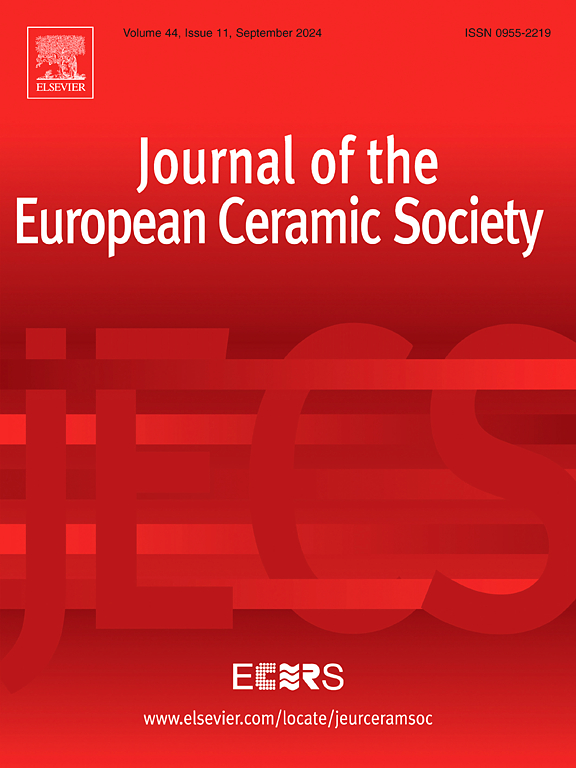钛酸钡冷烧结相场模型
IF 6.2
2区 材料科学
Q1 MATERIALS SCIENCE, CERAMICS
Journal of The European Ceramic Society
Pub Date : 2025-05-13
DOI:10.1016/j.jeurceramsoc.2025.117534
引用次数: 0
摘要
冷烧结是一种很有前途的技术,可以显著降低制造陶瓷所需的温度,从 1000°C以上降低到250°C以下。本文研究了支撑钛酸钡冷烧结的机制,用实验数据作为相场冷烧结模型的输入。根据钛酸钡晶粒尺寸随烧结时间和温度的变化规律,确定了钛酸钡冷烧结的活化能。计算结果为38 kJ/mol,比传统的固态烧结低10倍。然后利用该模型来了解化学驱动力和扩散系数对致密化的影响。利用相场模型进行的参数化研究揭示了粒度、温度、压力和活化能对冷烧结过程的影响,强调了冷烧结过程中通量在促进质量传递中的关键作用。本文章由计算机程序翻译,如有差异,请以英文原文为准。
A phase field model for cold sintering of barium titanate
Cold sintering is a promising technique to significantly reduce the temperatures required to manufacture ceramics from above 1000 °C to below 250 °C. This paper examines the mechanisms underpinning the cold sintering of barium titanate, with experimental data used as inputs for a phase field cold sintering model. The activation energy for the cold sintering of barium titanate was determined from the variation of grain size as a function of both sintering time and temperature. This was calculated as 38 kJ/mol, which is 10 times lower than for conventional solid-state sintering. The model was then used to understand the impact of the chemical driving forces and diffusion coefficients on densification. A parametric study using the phase field model provided insights into the effects of particle size, temperature, pressure and activation energy on the cold sintering process, highlighting the critical role of the flux in facilitating mass transport during cold sintering.
求助全文
通过发布文献求助,成功后即可免费获取论文全文。
去求助
来源期刊

Journal of The European Ceramic Society
工程技术-材料科学:硅酸盐
CiteScore
10.70
自引率
12.30%
发文量
863
审稿时长
35 days
期刊介绍:
The Journal of the European Ceramic Society publishes the results of original research and reviews relating to ceramic materials. Papers of either an experimental or theoretical character will be welcomed on a fully international basis. The emphasis is on novel generic science concerning the relationships between processing, microstructure and properties of polycrystalline ceramics consolidated at high temperature. Papers may relate to any of the conventional categories of ceramic: structural, functional, traditional or composite. The central objective is to sustain a high standard of research quality by means of appropriate reviewing procedures.
 求助内容:
求助内容: 应助结果提醒方式:
应助结果提醒方式:


